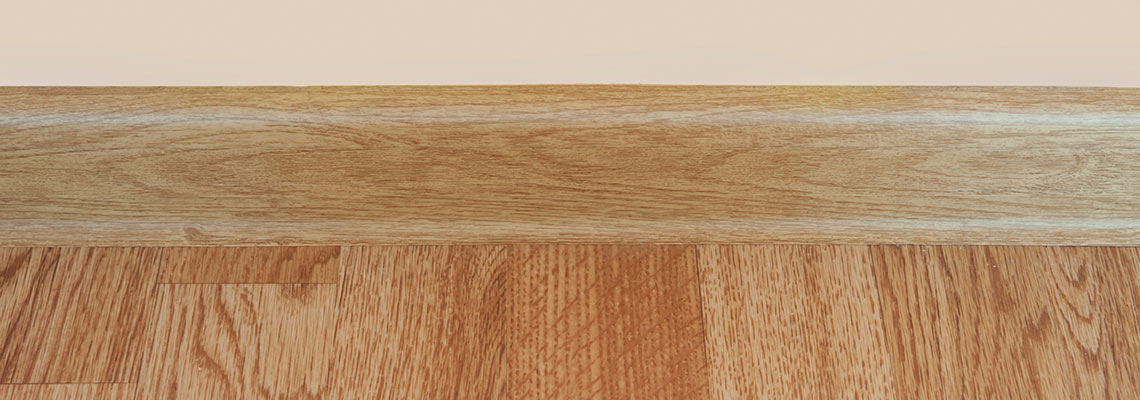
-
19 March, 2025
-
Sanding UK
When choosing a new wooden floor, it’s easy to focus on colour, finish, or wood type — but one of the most overlooked elements is the moulding. Yet, the right mouldings can make all the difference between a floor that simply looks good and one that looks professionally finished. These small details not only enhance the appearance of your flooring but also serve critical structural purposes, covering expansion gaps and providing smooth transitions between surfaces.
The term “moulding” refers to more than just baseboards — it includes end caps, stair nosings, scotia trims, carpet reducers, and more. Choosing the right wood floor mouldings before installation ensures that your flooring is not only beautiful but also secure, sealed, and complete.
In this guide, we’ll walk you through the most common types of wood flooring mouldings available, what they’re made of (typically oak, pine, or MDF), and where and why they’re used. By the end, you’ll know exactly which finishing touches you need to purchase along with your new floor.
6 Essential Types of Wood Flooring Mouldings
Before your flooring installation is complete, it is important to understand the various types of mouldings that bring both function and finesse to the finished result. Each type of moulding serves a specific purpose — from bridging height differences between surfaces to covering expansion gaps or enhancing stair safety. Let’s explore the most commonly used mouldings and how they contribute to the success of your flooring project.
T-Mouldings
T-mouldings are designed to create a smooth transition between two adjacent floors of equal height — often between two rooms with wooden floors. These mouldings are especially useful for door thresholds and open-plan areas. They can also be used between a wood floor and another hard surface like tile or laminate. Choosing the right T-moulding helps maintain visual consistency while accommodating the natural expansion of wood flooring.
Carpet Reducers & End Caps
Carpet reducers (also known as end caps) serve a similar function to T-mouldings but are specifically designed for transitioning from wood flooring to carpeted areas. They help bridge the difference in floor heights and provide a neat, safe edge that prevents fraying of carpet fibers and protects the edges of your wood flooring.
Hard Surface Reducers
Hard surface reducers are ideal for transitions where two hard flooring types meet, but at slightly different elevations. Whether you are joining hardwood with tile, stone, or vinyl, these mouldings provide a gentle slope to accommodate the height change — ensuring both safety and visual harmony across your flooring surfaces.
Stair Nosing
Stair nosing is essential for finishing the edge of wood flooring on stairs. It enhances both safety and appearance by adding a non-slip edge while reinforcing the step’s structure. Available in various profiles, stair nosings create a polished, uniform look and improve durability in high-wear areas like staircases. If your stairs are damaged before installation, consider professional staircase repair beforehand.
Quarter Round Mouldings (Shoe Mouldings)
Quarter round mouldings — also known as shoe mouldings — are small, curved trims used to conceal expansion gaps around the perimeter of a room. These gaps are left intentionally during installation to allow natural movement of the wood due to changes in temperature and humidity. Quarter rounds are typically installed where the floor meets the wall, alongside baseboards, or around steps and columns for a refined, finished look.
Baseboards (Skirting Boards)
Baseboards are the most widely used type of moulding. Installed along the bottom of interior walls, they provide both decorative and protective functions. Baseboards cover the gap between the wall and the floor and protect wall surfaces from knocks, scratches, and wear caused by furniture or vacuuming. They also contribute to the room’s overall aesthetic, adding a cohesive finish to your flooring project.
The Finishing Touch That Makes All the Difference
Choosing the right wood flooring mouldings isn’t just a minor detail — it’s a key part of achieving a seamless, stylish, and long-lasting floor. From T-mouldings and stair nosings to baseboards and quarter rounds, each type of trim plays a unique role in both the appearance and performance of your flooring. Plan ahead, match materials and finishes, and don’t underestimate the value of these essential components when creating a truly complete floor installation.
Frequently Asked Questions
Still unsure about which mouldings you need, how to install them, or whether they are optional for your flooring project? Below, we have answered some of the most common questions our customers ask when it comes to choosing and fitting wood floor trims. These insights will help you make more confident and informed decisions.
Do I need mouldings for every wood floor installation?
In most cases, yes. Mouldings cover expansion gaps, protect edges, and create smooth transitions between rooms or different flooring types. They’re crucial for both function and finish.
Can I install mouldings myself?
Many mouldings can be installed with basic tools, especially baseboards and quarter rounds. However, for complex areas like stairs or uneven surfaces, hiring a professional ensures accuracy and safety. If there’s existing damage or uneven transitions, it’s best to consult our floor repair specialists first.
Which material is best for wood floor mouldings?
Solid oak and pine are common choices for durability and aesthetics, while MDF is a cost-effective option for painted finishes. Try to match the moulding material to your flooring whenever possible.
Need Help Choosing the Right Floor Mouldings?
Whether you’re upgrading your home or planning a large-scale flooring project, our team is here to help. We offer expert advice, installation, and repair services across London and beyond.
Call us today on 020 88309782 for personalised guidance. Or book a free site visit and let us help you complete your flooring with the perfect finishing touches.
